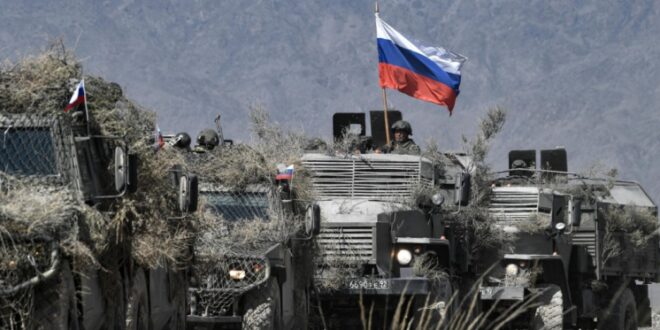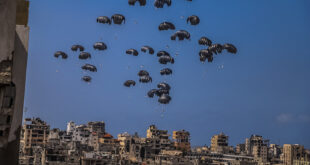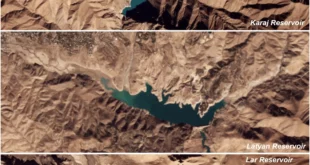Russia launched what it described as a special military operation in Ukraine on February 24, 2022, which it claimed was to defend its national security red lines there after NATO clandestinely crossed them. This included Moscow’s allegation that it was duty-bound to stop what it said was a genocide in Donbass. Kyiv, NATO, and some of their non-Western partners, however, said that this move violated international law. They subsequently imposed maximum sanctions against Russia.
Global opinion remains mixed about who’s to blame for everything that occurred over the past year, but there’s universal agreement that it represents Europe’s worst conflict since World War II. The latest phase of the Ukraine conflict is also increasingly conceptualized less as a purely Russian-Ukrainian one and more as a Russian-NATO proxy war that’s being fought in Ukraine. This is because of that bloc supporting Kyiv to the tune of over $120 billion so far in arms and other aid.
The optics of NATO indirectly fighting Russia in Ukraine through its unprecedented full-spectrum support for the latter have led many to declare that there’s a new Cold War. Russian officials, including President Vladimir Putin, have portrayed their country’s campaign as part of a larger global struggle against the U.S.’s unipolar hegemony over international relations, while his Western counterparts have claimed that they’re supporting Kyiv as part of their obligation to defend “democracy” across the world.
Neither side, whether one describes them as Russia-Ukraine or Russia-NATO, seems to have expected the conflict to become this protracted. American officials warned prior to the events set into motion on February 24, 2022 that Kyiv risked being overrun by Russia in three days, but they also believed that the maximum sanctions imposed upon Russia in response would lead to a swift withdrawal. Neither outcome materialized, however, and even The New York Times recently acknowledged that the sanctions have failed.
For Russia’s part, its self-described restraint in terms of how it still describes the conduct of the ongoing campaign suggests that it was prioritizing post-conflict political calculations aimed at reconciling their people over the pure pursuit of military objectives, which implies that it too expected a speedy victory. Furthermore, its setbacks in Kharkov and Kherson regions were disadvantageous to its goals, and its partial mobilization last September arguably commenced due to growing military pressure upon it.
As it presently stands, the latest phase of the conflict has been at a stalemate since mid-November, with only minimal on-the-ground progress having been achieved by Russia since then. The referendum conducted by Moscow in the Donetsk, Kherson, and Zaporizhzhia regions last September resulted in them joining Russia, though Kyiv and its partners consider that development to be an illegal annexation. The Kremlin, however, says that this reality must form the starting point for reviving the peace process.
In contrast, its opponents demand that Russia withdraw from all the territory that Ukraine claims as its own in order to resume talks for ending the conflict. Amidst this dilemma, each side is reportedly preparing for another large-scale offensive against the other, thus reducing the chances for a political resolution until sometime after the upcoming battles end. About those, it remains unclear which side’s forthcoming offensive will succeed, if any.
NATO Secretary General Jens Stoltenberg declared last week that his bloc is in a so-called race of logistics and war of attrition with Russia, warning that the failure to sustain the pace, scale, and scope of armed support to Kyiv could lead to it losing. This remark added credence to prior concerns shared by The New York Times last November and the U.S.’s Naval Secretary in January that the West is experiencing a military-industrial crisis caused by their lack of preparation for a protracted conflict.
It should also be mentioned in connection with the above observation that NATO’s $120 billion worth of support to Ukraine has been insufficient in defeating Russia thus far, which raises questions about exactly how much will ultimately be needed in order to further advance that goal, let alone fully attain it. Nevertheless, in spite of Russia’s impressive military resilience in the face of such unprecedented opposition to its ongoing campaign, its forces haven’t regained the momentum that they lost in April.
The military-strategic dynamics one year into the latest phase of the Ukraine conflict therefore suggest that there’s no clear winner right now in Europe’s worst conflict since World War II. While this would in and of itself extend hope that they would negotiate a ceasefire in order to avert the further depletion of their (and in Kyiv’s case, also their partners’) forces, this hasn’t yet happened owing to the conditions that each side has made for reviving such talks, which the other considers unacceptable.
That being the case, one can therefore predict that the upcoming reported offensives being planned by each side could be decisive in coercing the other to agree to their aforesaid conditions in the event that they achieve some serious on-the-ground successes over their opponent. If the stalemate still largely remains in place after the smoke settles, and it could potentially take until next winter for the upcoming round of fighting to end, then both sides might moderate their positions towards peace talks.
With this in mind, the role of truly neutral states might become much more important in that scenario since they would function as the most credible mediators for facilitating the revival of that process. Released on February 24, China’s Position on Political Settlement of Ukraine Crisis which is a 12-point position paper on a political settlement of the Ukraine crisis could boost China’s respective credentials and thus position it to play a peaceful role if all parties agree.
It’s premature to forecast how everything might unfold since there are too many variables influencing the situation, including those that the public isn’t privy to. That said, few doubt that both sides are preparing offensives and that their outcome will be decisive in determining what comes next. Whether one party coerces the other into agreeing to their conditions for peace talks or a truly neutral third party convinces both to do this without preconditions, the conflict will inevitably end through diplomacy.
 Eurasia Press & News
Eurasia Press & News



